Will the M4e8 Fury Be on Sale Again in Wot?
Main Guns: The Sherman Mounted Six Different Guns, Only Not On All Versions,
The Sherman tank and its chassis was host to a variety of guns. Most had the M3 75mm gun, or the M1A1 76mm gun, but many were likewise equipped with the British 17 pounder, the M3 90mm, 3-inch AT gun, and the M2/M4 105mm howitzer. I will encompass each beneath.
The M3 75mm gun: When information technology start saw gainsay, information technology was a smashing tank Gun
The M3 75mm gun was a not bad tank gun for the time the Sherman was outset introduced to combat and was based on a well-liked WWI French field gun. When information technology first saw combat it could dial through any German tank information technology faced, from simply virtually any angle. It's a myth the Sherman was designed to only support infantry, though its master role was not anti-armor, it was still designed to face other tanks. The gun worked well in the infantry support function likewise, with an effective HE and WP fume round, and a canister circular. This gun had a very high rate of burn in the Sherman (20rpm) and was mated with a basic stabilization organization. This system did not let shooting on the motility accurately just did permit the sights and gun to exist put on the target faster when the tank came to a terminate to shoot. No globe war two tanks could shoot on the motility with a real hazard to hit fifty-fifty a stationary tank-sized target. With a xx-round a minute rate of fire, the Sherman could pump out a lot of HE in support of the infantry, and it was non unheard of for the tanks to exist used as artillery. The Sherman tank was equipped with all the gear to act every bit artillery if needed and was a regular occurrence in the MTO, less so in the ETO.
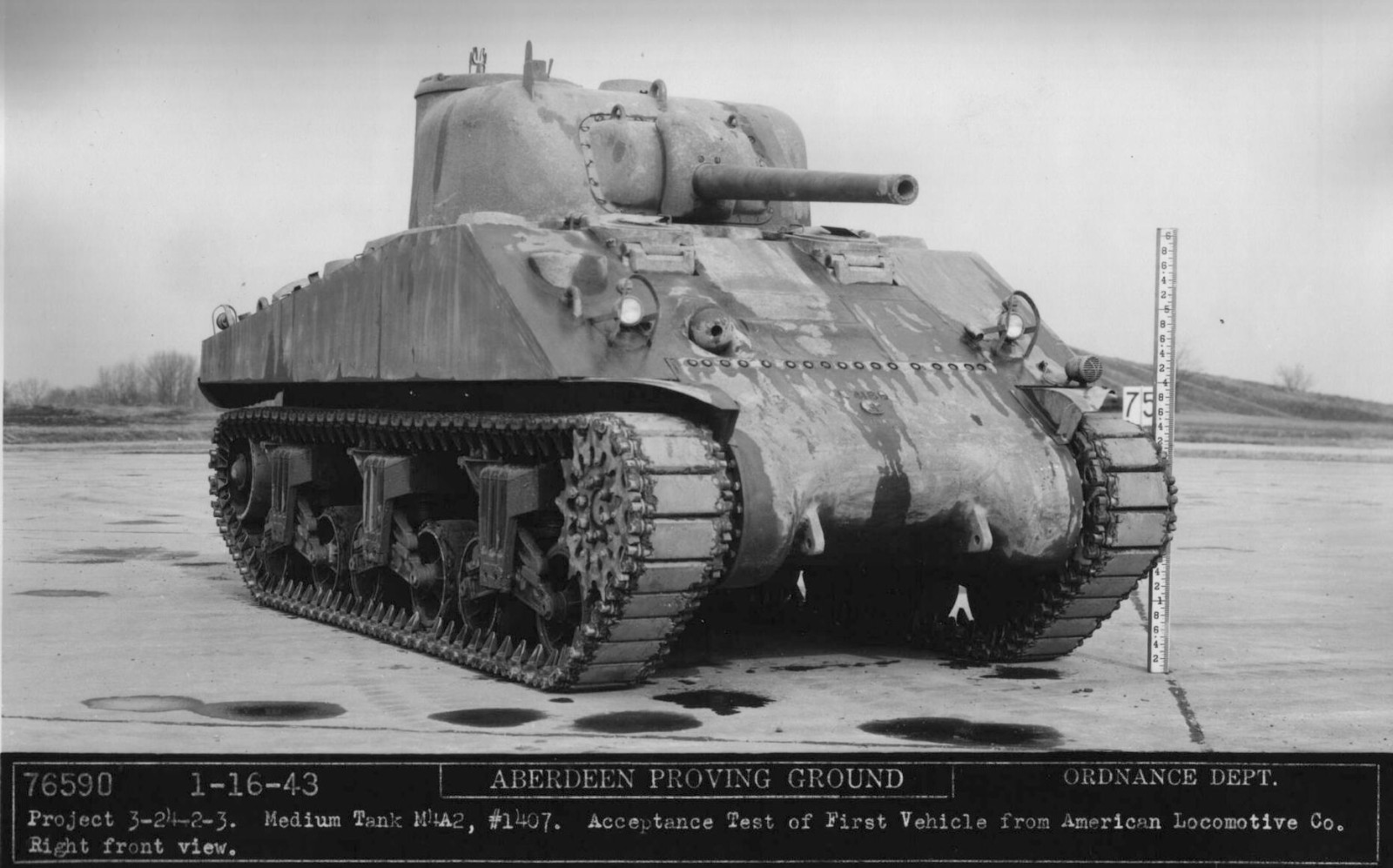
Southwardherman tanks with the 75mm gun carried between 104 and 97 rounds of main gun ammo. Only ten to 15% of this ammo was AP, that'southward how rare other armor was, HE would make up the bulk of the balance of the load, with maybe some other 10 to fifteen% beingness WP smoke, since this was too a somewhat destructive beat out, because information technology caused fires and WP when it landed on a person was hard to put out. There was also a canister trounce, only I recall information technology was but used in the PTO. The charge per unit of fire on the gun is a little misleading, since depending on the Sherman, you lot would take between 6 and 12 ready rounds, more on the very early Shermans with set rounds around the base of operations of the turret basket. Once the ready rounds were fired, and oft, the ready rounds are kept in reserve anyway, to bargain with unexpected threats. Wet Shermans had an armored 6 round set up box mounted in the turret, the rest of the ammo was in armored boxes under the floor. Most wet tanks had a half turret basket or none at all. This was a problem common on pretty much all tanks.
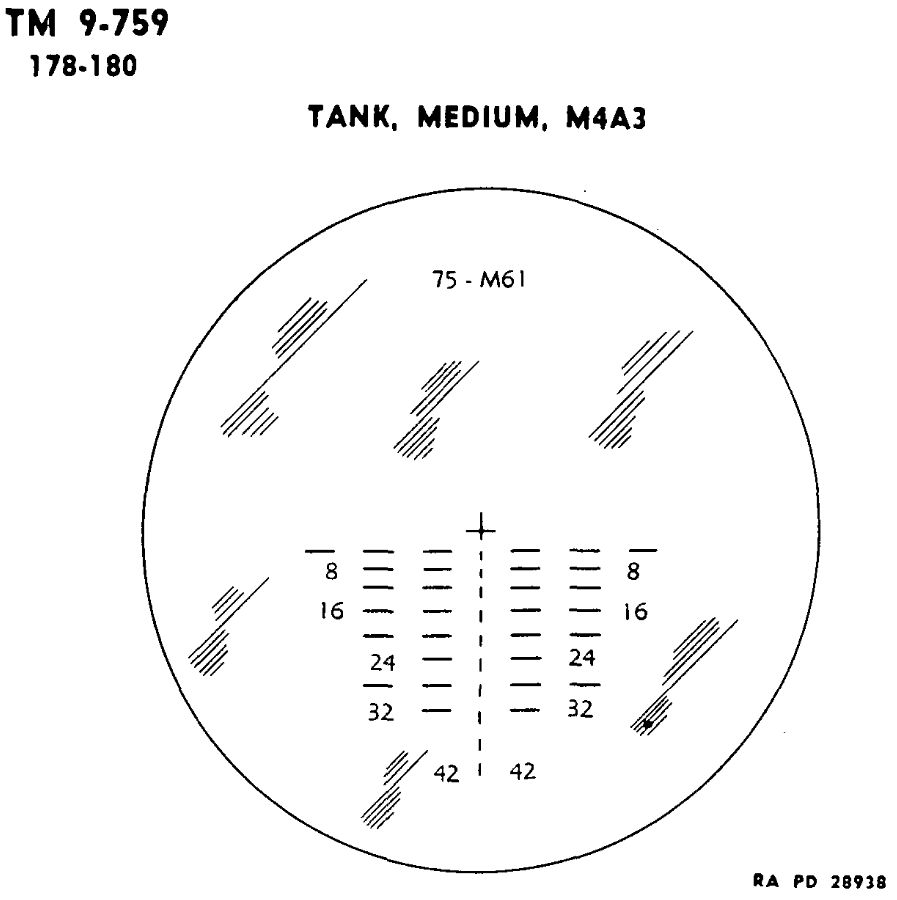
The M3 75mm gun was so well-liked, the British essentially concluded up converting many of the QF 6 pounders to fire the aforementioned round, fired with basically the same ballistics, with the advantage of not needing to alter the current tanks mount. The WF six pounder was a better AT gun, but, its HE circular was not very skillful. The M48 HE circular used by the m3 75mm had 1.5 pounds of TNT inside, and since the Sherman could fire them fast, and the shell was fairly handy, information technology's easy to come across why the gun was good at infantry back up. It really simply lacked the ability to pen the frontal armor of the German Tiger and Panther, but those tanks were rare plenty, or easy enough to get side shots on, the 75 did the job, and did it the whole war since the 76mm armed Shermans never totaled more than 53% of the Sherman forcefulness in Europe. The M3 75mm gets a lot of flak thrown at it by ignorant people who think it was a low-velocity gun that could not penetrate armor. These people must be confusing it with the German KwK 37 50/24 75mm gun that armed the first versions of the Panzer Iv.
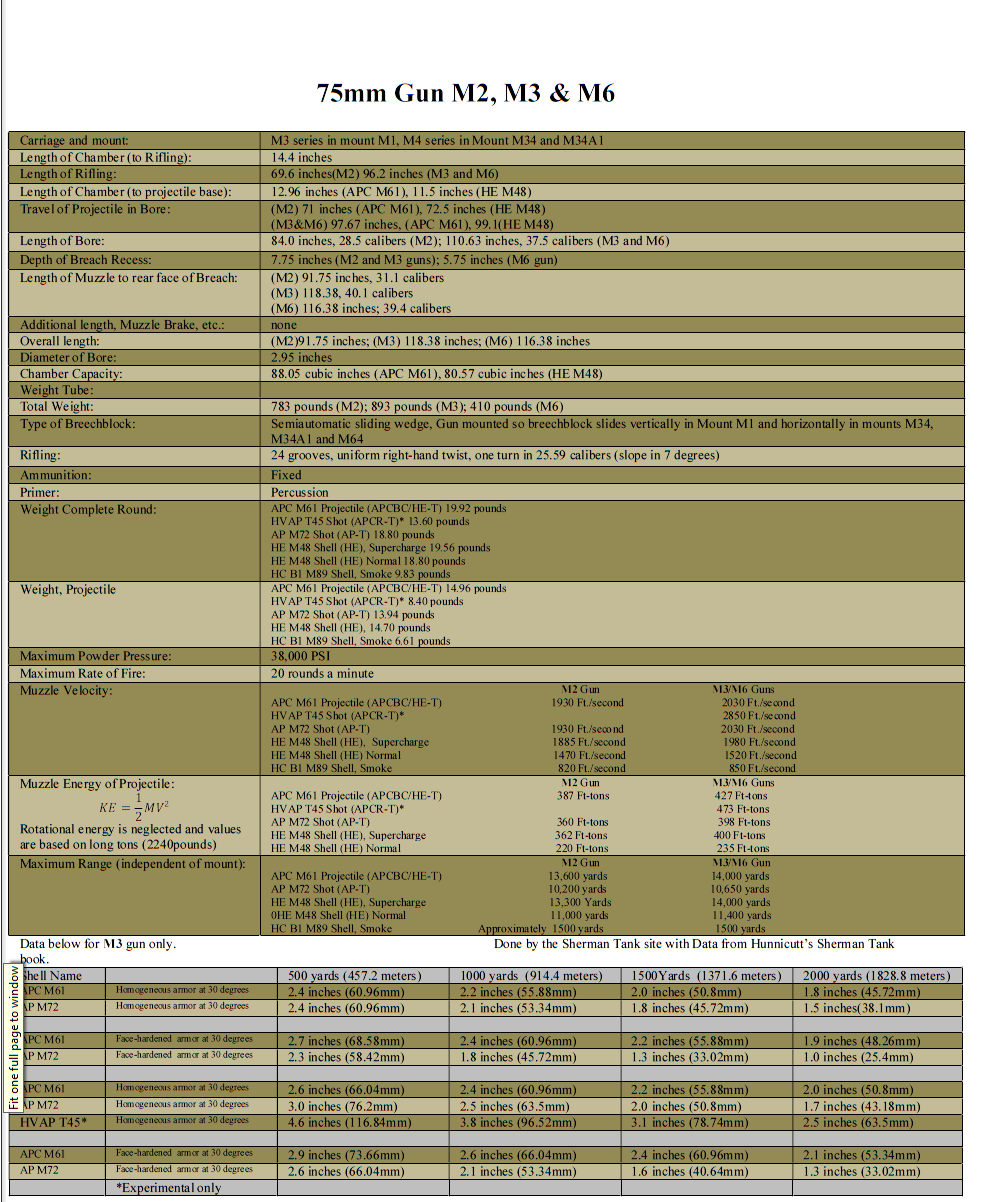
75mm M3 spec booklet MK Half-dozen Download.
The M1/M1A1/M1A2 76mm gun: Fabricated by Oldsmobile, It Was Non a Great Gun, but Did the Job
The M1 series of 76 mm guns went into production before the U.s.a. Army had any idea of German heavy tanks or the Panther. They were just looking ahead, to go on the Sherman as good a combat weapon every bit possible, and to stay ahead in the arms race. They had the 3-inch AT gun on hand and had used information technology in the M6 and M10, but it was actually too bulky to work in a medium tank turret. The Ground forces decided to design a gun with the same ballistics, but in a much lighter, and less bulky package, in doing so the M1 gun was born. The gun overhung the front of the Sherman a lot so the Army decided to shorten it over a foot. Information technology however seemed to friction match the ballistics of the 3-inch AT gun though; guns with the shorter barrel were designated M1A1 guns. The first 3 hundred or so guns produced past Oldsmobile lacked muzzle brakes or the threads to install them. Gun's produced after that had the threads and a protective cap over them then a brake could be installed after. The final variant of the gun was the M1A2, installed in belatedly production 76mm Shermans, this gun e'er had the muzzle brake, merely had a slightly different barrel, with a minor change to the rifling twist.
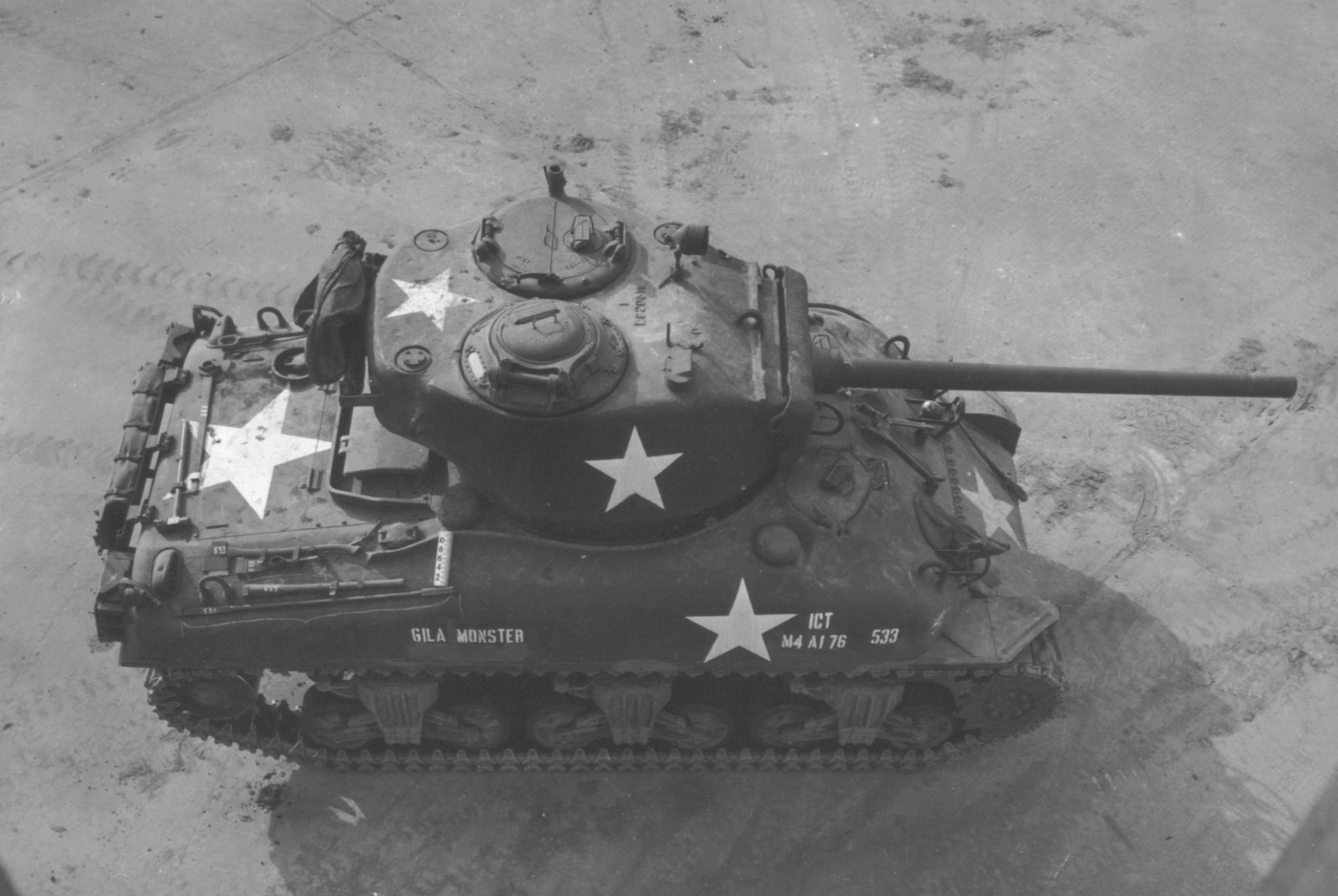
Much of the later big hatch hull tanks were produced with a larger turret to accommodate the M1 family unit of 76mm guns. This turret came on M4A1s, M4A2s, and M4A3 tanks. The M1A1 on the early tanks, like the M4A1 76 due west tanks used in Functioning Cobra, came without cage brakes. When firing during dusty -conditions the view of the target would be obscured by dust stirred up from the guns nail, the fix for this was for the commander or another crewman to stand up away from the tank and talk to the crew over the intercom, via a long wire, and correct the shots onto the target. Non a great fix…The final gear up was muzzle brakes; it took a little while for supply to take hold of up with demand but they were showing upward on Shermans in Europe past late 44, and by March they seemed to be in stock and showing upwards on tanks that had the protective cap before.
Another problem was the gun was non a huge improvement over the M3 75mm as a tank killer, and was not as skillful as an HE thrower. As mentioned earlier, several tank divisions didn't desire the improved Shermans at first. The penetration problem would be partially solved with HVAP ammunition, only by the time it was common, German tanks to use it on were not. Mail service-war, armament would be further improved and there would be no shortage of HVAP ammo in Korea, so the U.s.a. Regular army would soldier on with the gun, in its last improved form, the M1A2.
The M1 series of guns were also stabilized when installed in the Sherman, but information technology was the same organisation used with the 75mm gun, offering limited advantages. The Nazi Germans never fielded a stabilization system of any kind on their tanks. Tanks with the M1 and M1A1 guns carried 71 primary gun rounds in moisture storage racks under the floor, with an armored half-dozen circular ready rack on the turret floor.
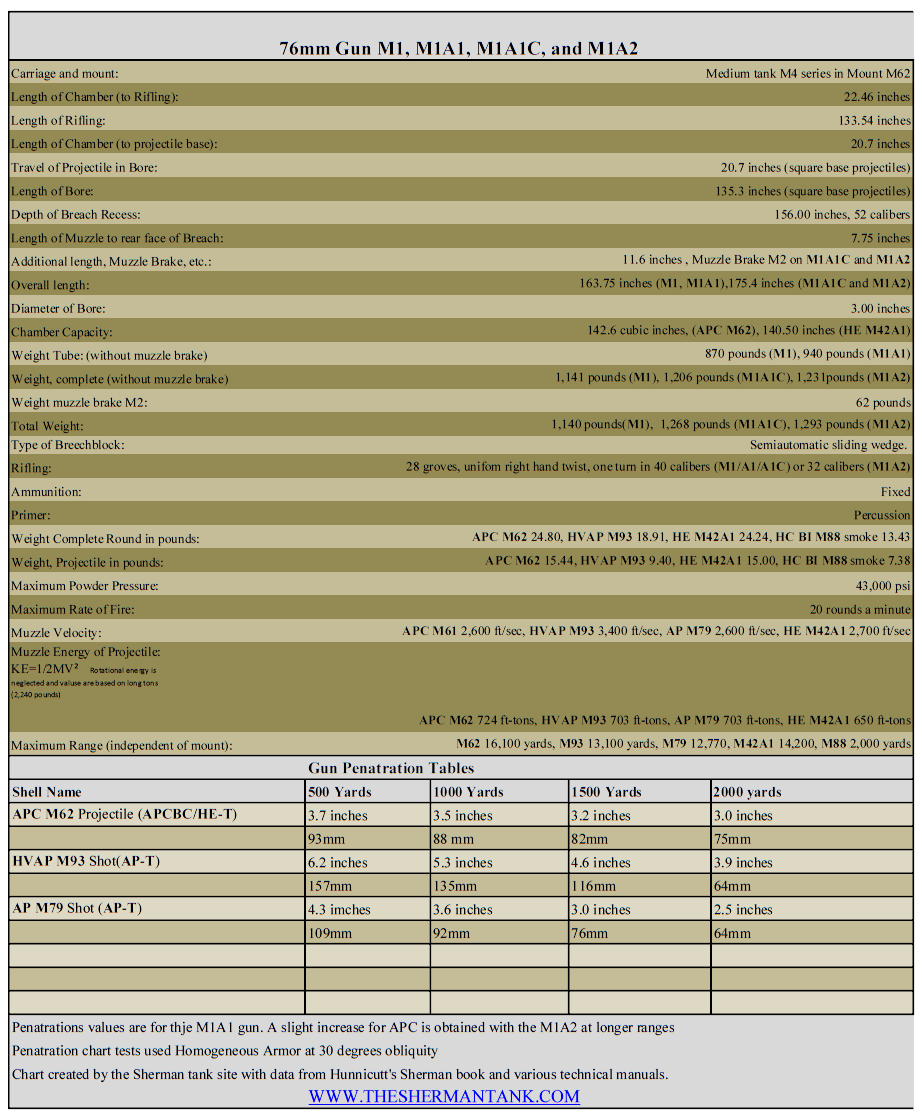
M1-M1A1-M1A2 guns 76.2mm Sherman Tank Gun PDF file.
The M3 90mm Gun: The Well-nigh Powerful AT Gun the US used During the War.
The US M3 90mm tank gun started out life as an AA gun, a very proficient AA gun, unlike the very overrated Flak eighteen/36/37. As the AA gun was adult, its mountain gained the power to be used against ground targets, with up to -10 degrees depression. The ballistic operation on the gun was practiced, merely what really made the AA gun shine was the AA gun system that incorporated Radar, and proximity fuses, sci-fi tech to the Germans, but pretty typical American engineering science for the fourth dimension, it was the all-time land-based AA gun organisation of the war. Contrary to some claims, it was pretty rare for US 90mm AA guns to be used in the directly fire role. The Usa Army was rarely desperate enough to have to resort to such tactics.
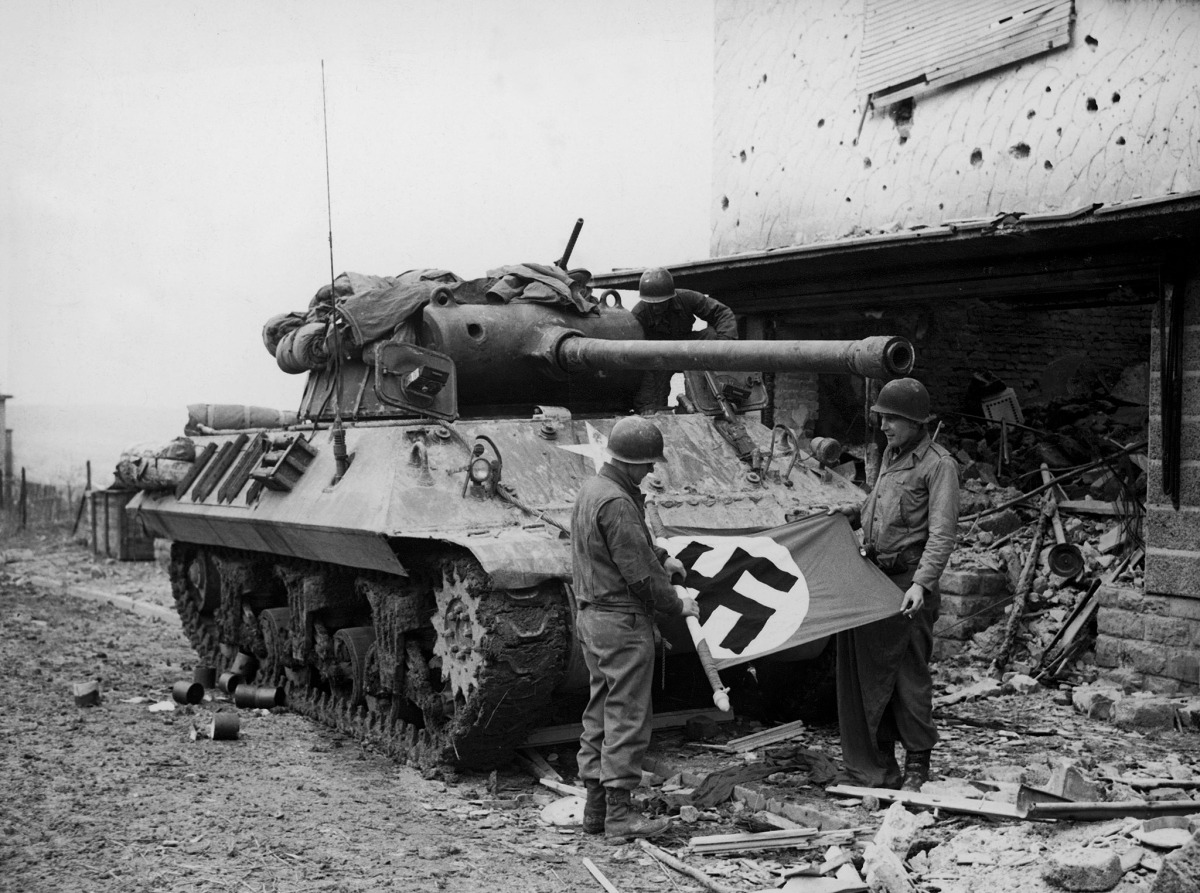
When the US Army started looking into a bigger AT gun than the 3-inch, the M1/M2 90mm AA gun was a natural option. The tank-mounted weapon would be designated the M3, and with a barrel threaded for a muzzle brake, the M3A1. When tested against the British 17 pounder gun, the M3 had slightly junior performance but was more accurate. The United states Regular army preferred the 90mm over the 17-pounder for diverse reasons, the biggest beingness it didn't take scary flashback out of the breach on firing, making it seem like a somewhat shoddy pattern. The 90mm M3 would soldier on the in the M26/46 tanks only would exist replaced past improved 90mm guns on the M47 and M48.
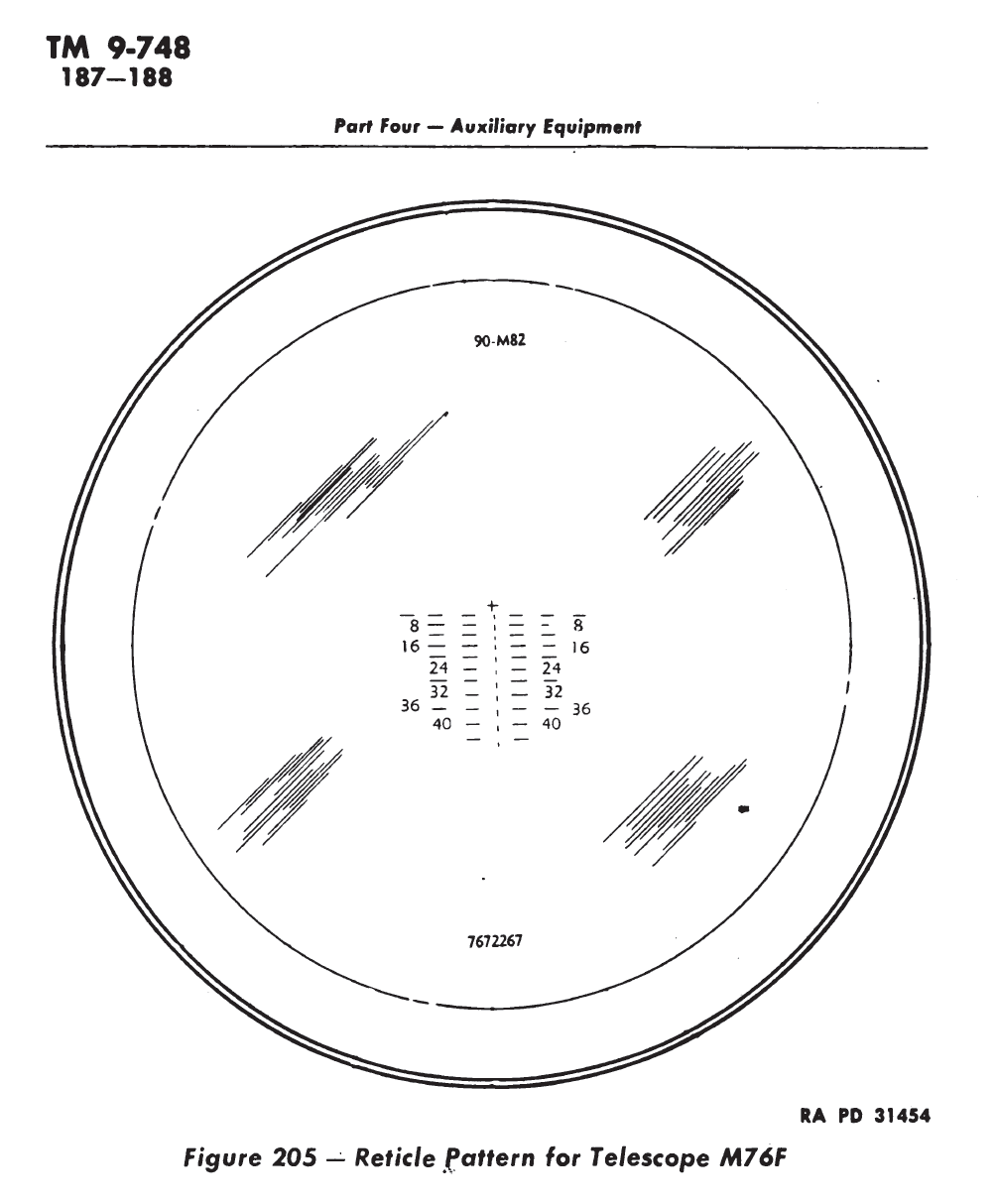
As a dual-purpose tank gun, the M3 90mm was practiced. Its rounds were not besides big for one homo to handle. It had good AT performance and a more strong HE round than the M3 75mm gun. When installed on the M36 Tank Destroyer, it was able to deal with the rare heavily armored German threat, if the regular Shermans hadn't already killed it by the time the M36 got there. Since the gun was not overly hot, it didn't wear barrels out fast, so it could nonetheless be used in an artillery role.
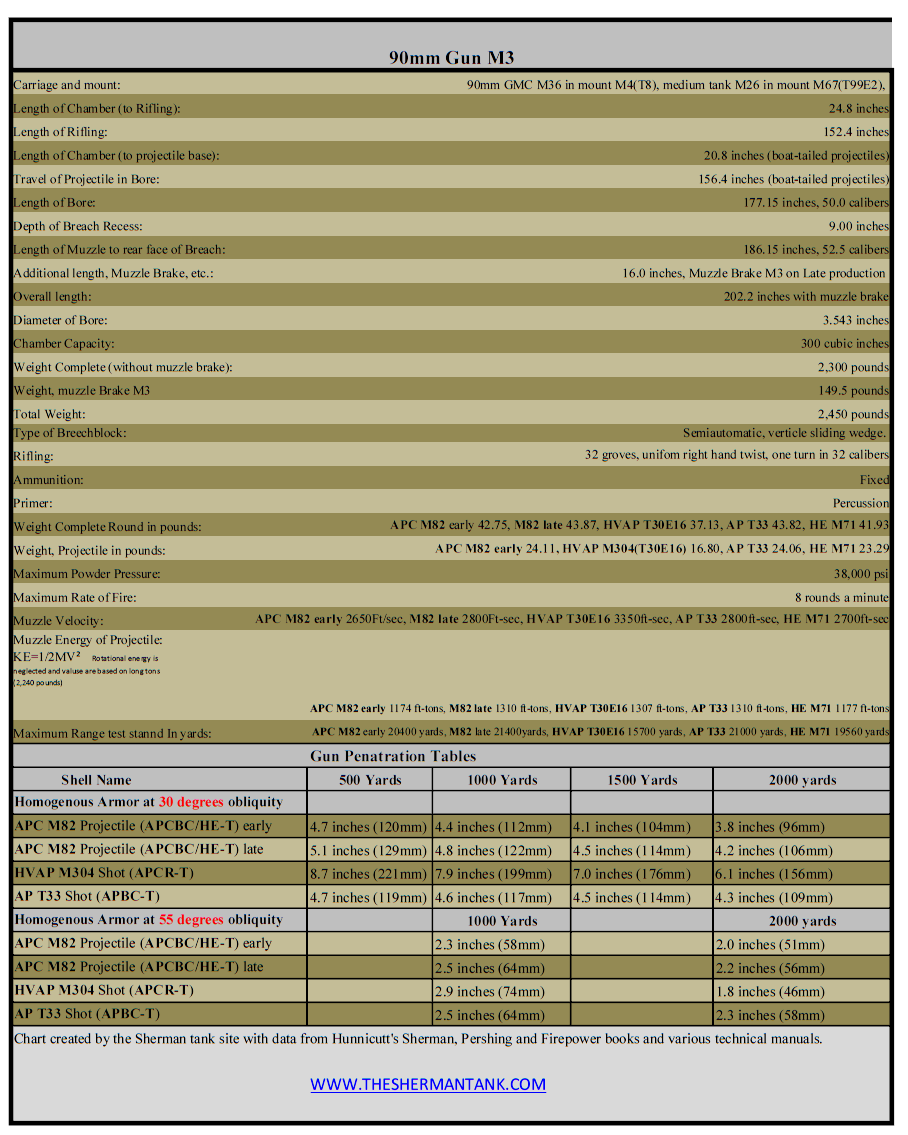
M3 90mm gun information on PDF
The three-Inch AT gun: An One-time AA Gun Finds a New Utilise
The 3inch AT gun started out life as a AA gun. It was nonetheless being used as one for the first half of the state of war. It was a natural option as an AT gun since information technology was being replaced by the M1/two/3 90mm AA gun system. The gun was big, heavy, and bulky, and the M10 tank destroyer's turret had to be rather big to fit it. They were too able to fit it in the T1/M6 Heavy tank, just information technology was clear it needed a redesign to fit in a smaller turret similar the regular Sherman. This ultimately leads to the M1A1 gun discussed to a higher place.
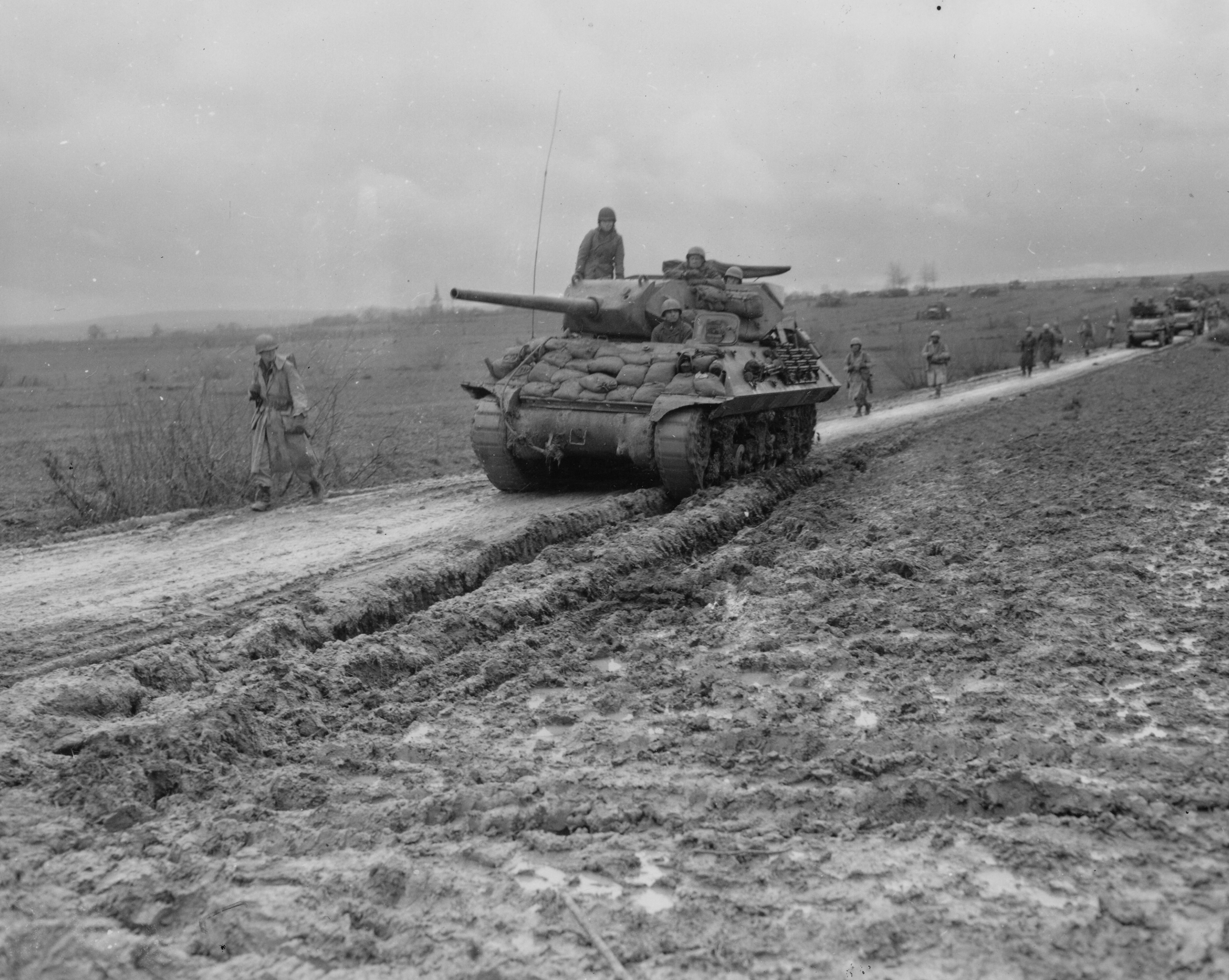
There was too a towed AT gun version of this weapon, it was by and large non well-liked. Information technology was besides big to move effectually easily by hand, hard to hibernate, and didn't take great pen to piece of work well equally a fixed gun. At one point in the war, nigh half the Tank Destroyer Battalions were towed and equipped simply with the towed guns and trucks to move them. These TD battalions had little luck, and some actually got clobbered in the Battle of the bulge.
Ultimately this gun use was more almost taking unused guns on hand and getting a decent AT weapon out the door fast, by using them for this new purpose. They were not perfect, and equally towed weapons, fifty-fifty really good, but on a mobile platform like the M10 or even the M6 heavy tank they did the job well enough.
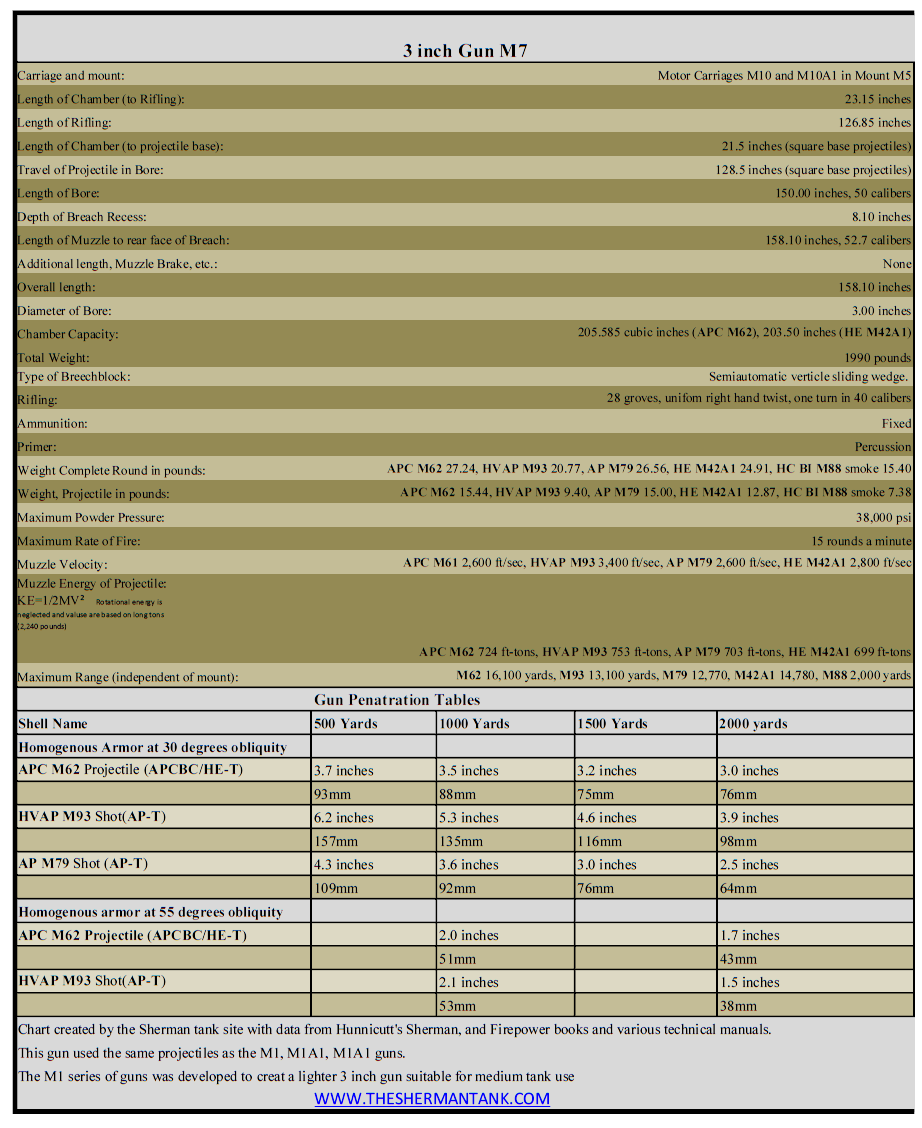
three inch M7 Gun spec sheet PDF download
The M2/M4 105mm Howitzer: Artillery in a Sherman Package

The US 105mm M2/M4 howitzer was the biggest gun installed in the Sherman, the versions of the Sherman with this gun were developed to supercede the M7 Priest, only never fully did so during WWII. They were used in the same role, or in express direct support roles. These tanks did non take a stabilized gun or moisture ammo racks merely did have a large hatch hull. All 105 Sherman tanks, either M4 (105)south or M4A3 (105)s were produced exclusively by Chrysler. 105 tanks carried 66 rounds of main gun ammo, in dry ammo racks.

Sherman tanks equipped with the 105 often constitute themselves pooled with the others from the three companies of a battalion, with the two from the battalion HQ, so the Tank Battalion could have their own mini 105 battery on call. When working with their assigned company, they were often held in the back and supported the gun tank platoons with indirect or direct fire.
The 17 pounder gun: 76.2mm of British High-Velocity Nail Boom
The 17-pounder was developed to replace the six-pounder, it was clear the 57mm six-pounder wasn't going to be able to handle tanks with thicker armor, but it stayed surprisingly relevant late into the war. The 17-pounder started evolution in the final months of 1940 and was going into prototype testing in late 1941. The beginning few AT guns were made by slapping the gun onto the 25 pounder carriage called the 17/25 pounder, and some were shipped to North Africa, to counter the supposed Tiger threat. The total product QF 17 pounder AT gun was available by the Italian Campaign.
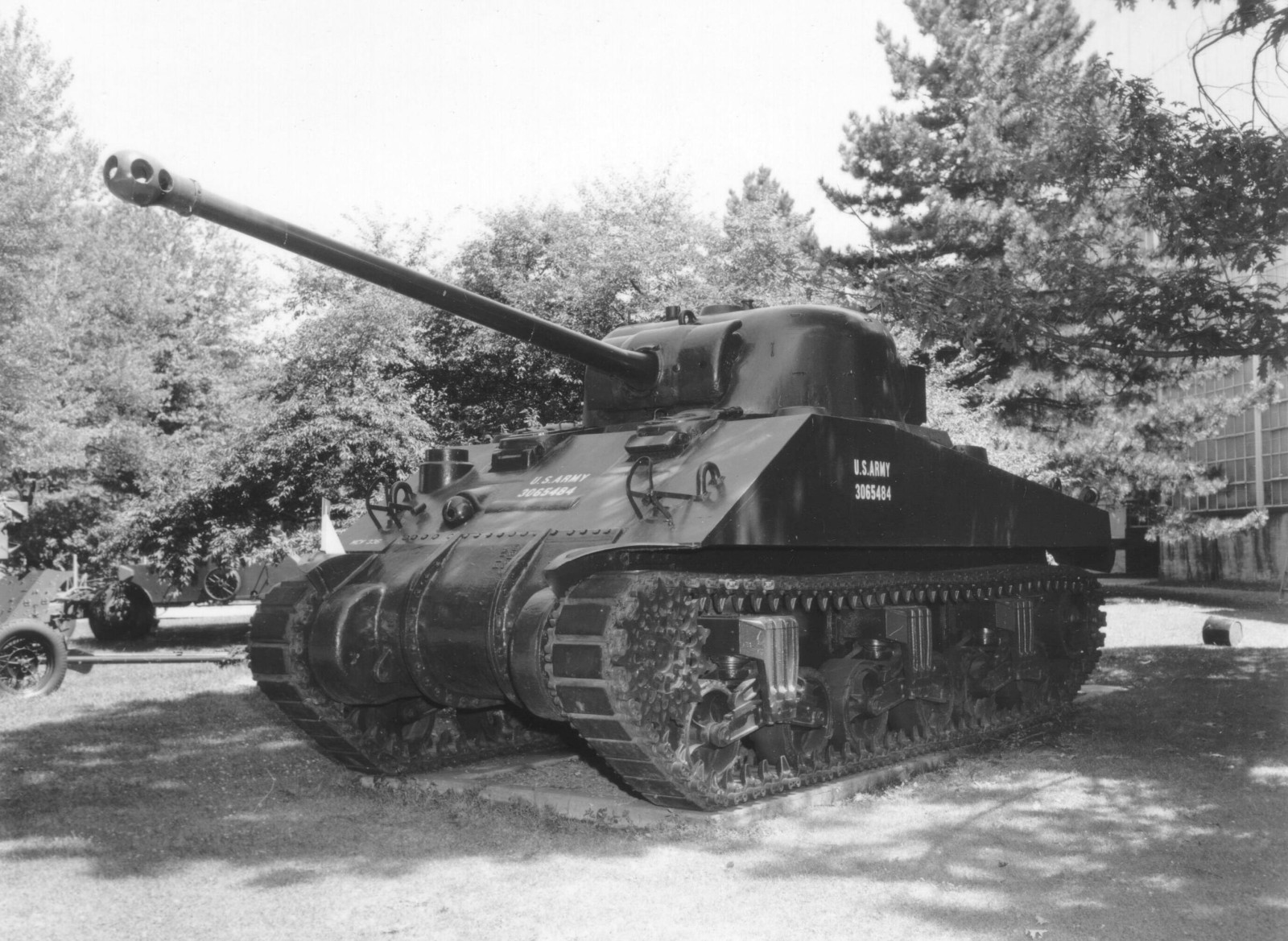
The main reason the gun was a better AT gun than the The states M1A1 gun was the round had a lot more propellant backside the projectile and so the Brits came up with the super velocity discarding sabot round. This new circular had very practiced penetration but had some serious accuracy bug. The accuracy problems with the SVDS ammo were not fully solved until after the war. The gun was intended for tank apply, only the British Tanks meant for information technology had too many developmental issues, and were not going to be fix by Normandy landings, then the Sherman Firefly was born. Encounter its ain section for more info on these Shermans.
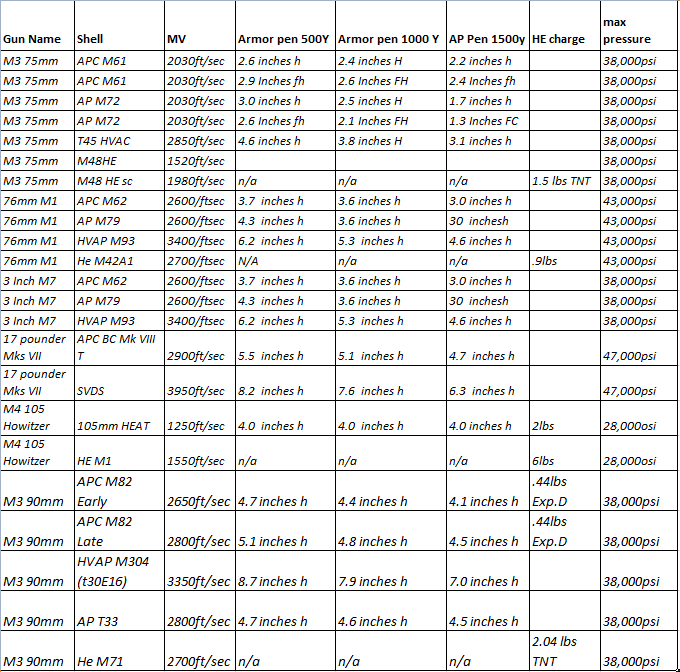
M4A1 with 76 gun

M4 105

What's left of an M4A3 75w on Iwo Jima
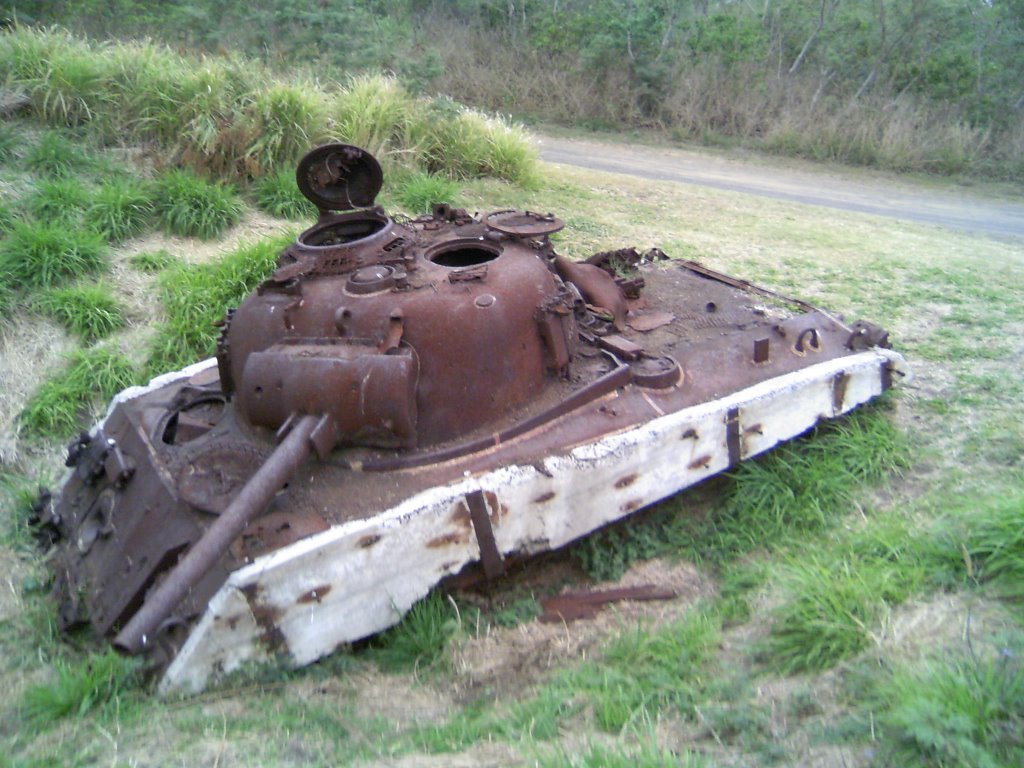
M36 with M3 90

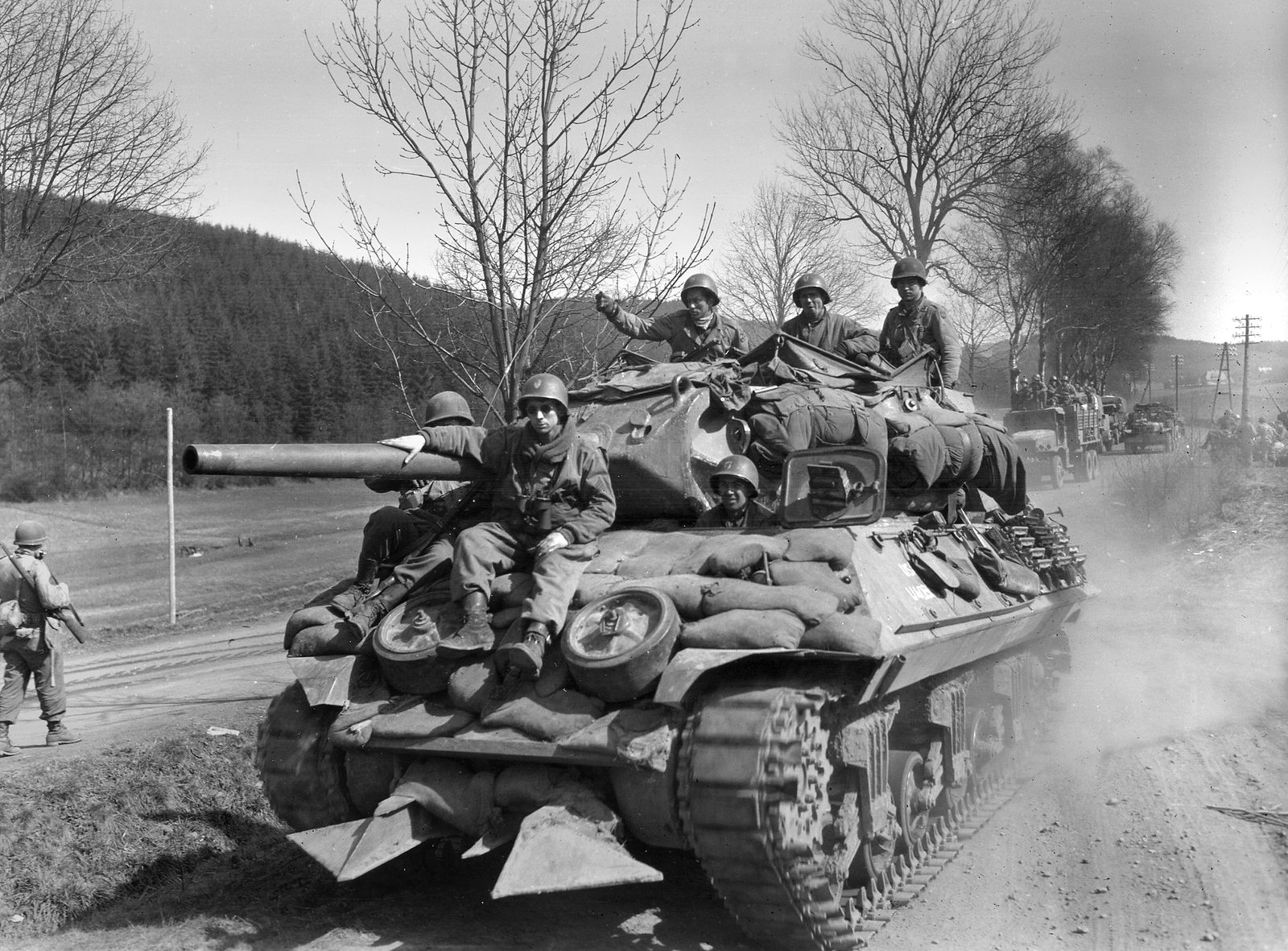
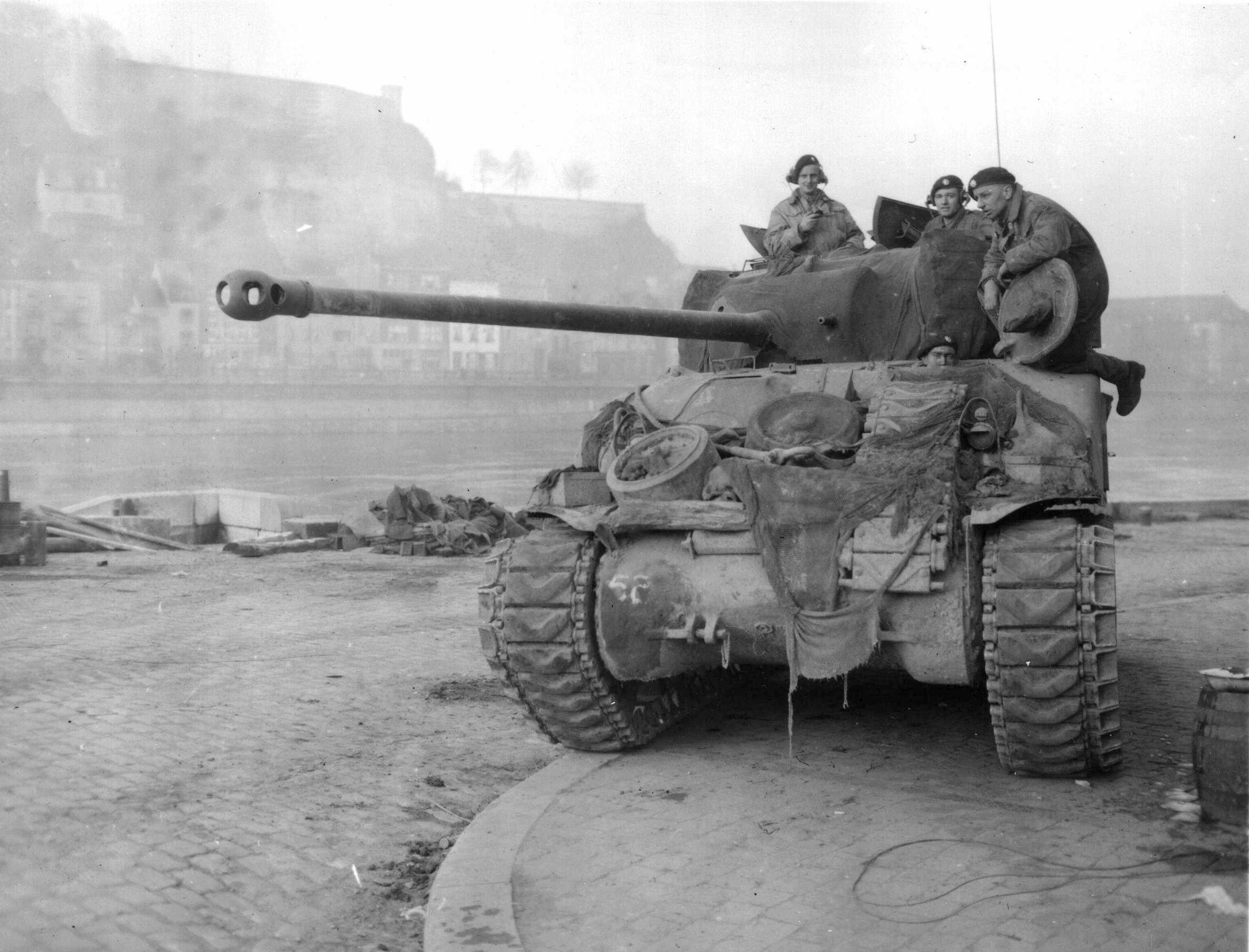
Sources: Armored Thunderbolt by Zaloga, Sherman by Hunnicutt, Combat Lessons, Archive Awareness, WWII Armor, Ballistics and Gunnery by Bird and Livingston, TM9-374 90mm Gun M3
Source: http://www.theshermantank.com/category/105mm-m4/
0 Response to "Will the M4e8 Fury Be on Sale Again in Wot?"
Enregistrer un commentaire